Benchmarked: Rise of the Tomb Raider
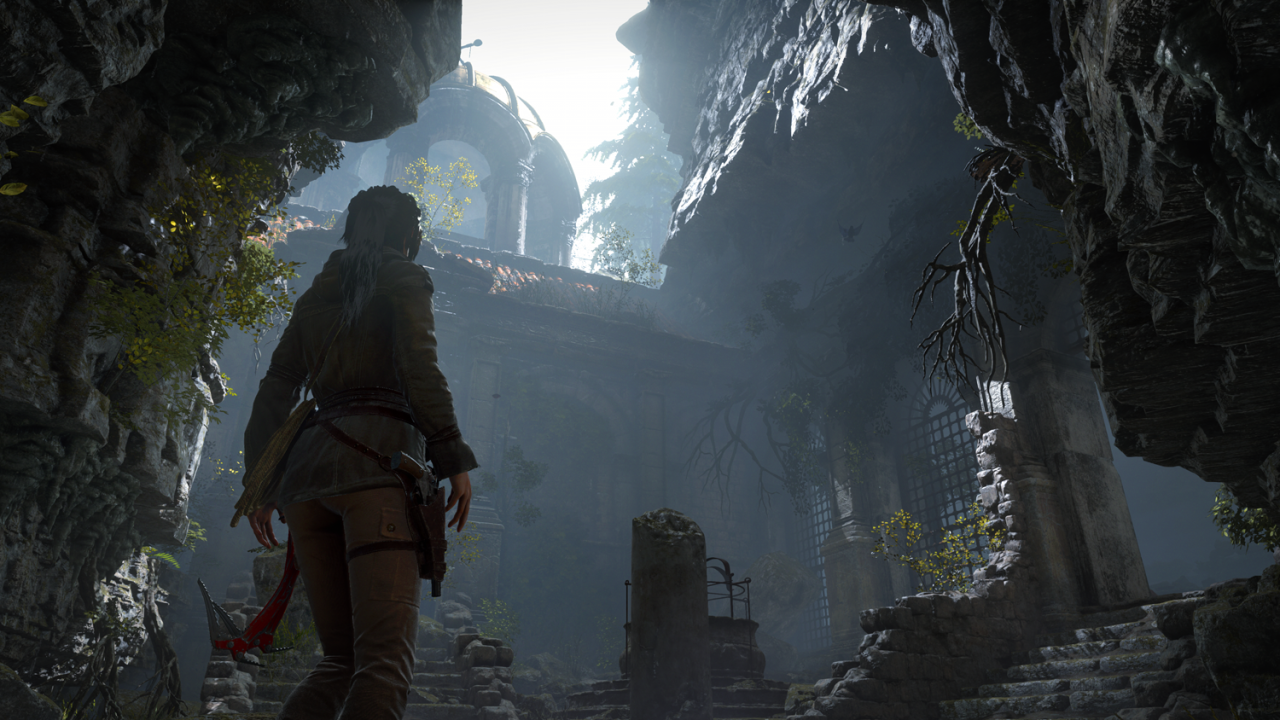
The game is afoot
We'll start our benchmarks with a look at graphics cards, all running on a 4.2GHz i7-5930K. This is a beefy rig, so rest assured we're making our best effort to hit high frame rates—if the CPU is a bottleneck here, there aren't many faster CPUs around (short of additional overclocking). As a reminder, we're testing at 3840x2160 using the High preset, with anti-aliasing set to FXAA.
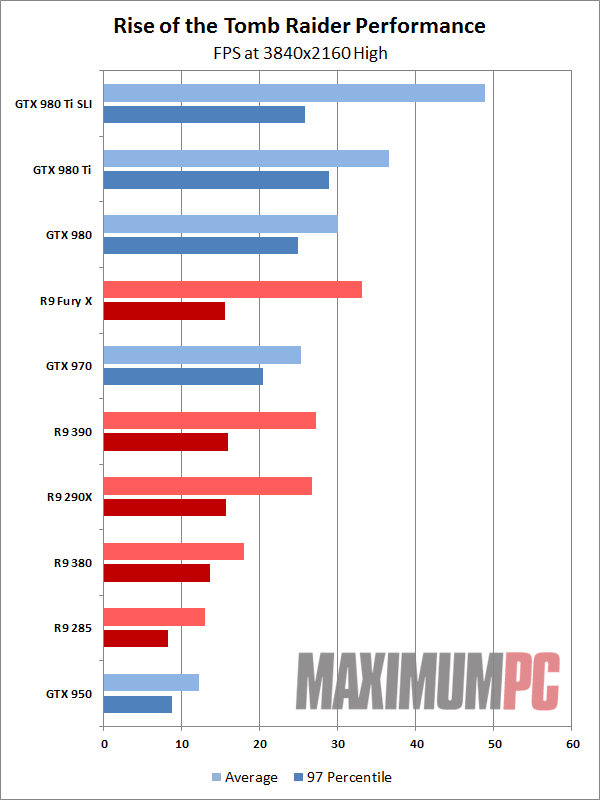
4K can be punishing even in the best of situations, and Rise of the Tomb Raider is certainly not going to be a best-case scenario, particularly so soon after launch. We might see some performance improvements over the coming weeks, but we're far from breaking 60 fps at the Very High setting, and even using the High preset we're still coming up short on the fastest current GPUs. A single 980 Ti at stock breaks the 30 fps mark, but not by much, with lows still dipping into the high 20s; it's still playable, for the most part, but it's not an ideal solution. The GTX 980 is about 20 percent off the pace set by its big brother, averaging exactly 30 fps but with frequent dips into the low-to-mid 20s. AMD's R9 Fury X meanwhile falls between those two in average fps, but the minimums are substantially worse, often dipping into the low teens. Lack of VRAM may be part of the problem here, as a single R9 390 actually manages slightly better 97 percentile results, but drivers are almost certainly a big part of the problem.
Looking at the potential for multiple GPUs to help, dual 980 Ti cards in SLI do get us well into the playable range, particularly if you're running a G-Sync display. (Our particularly test display is an Acer XB280HK, if you're wondering.) Even so, we're still well short of 60 fps, and minimum frame rates end up slightly worse than with a single GPU—nothing new there. We've encountered plenty of new releases that fail to scale at all with SLI/CrossFire at launch, so getting even a 33 percent boost from the second GPU at launch is pretty decent; hopefully we'll see even greater gains in the coming weeks.
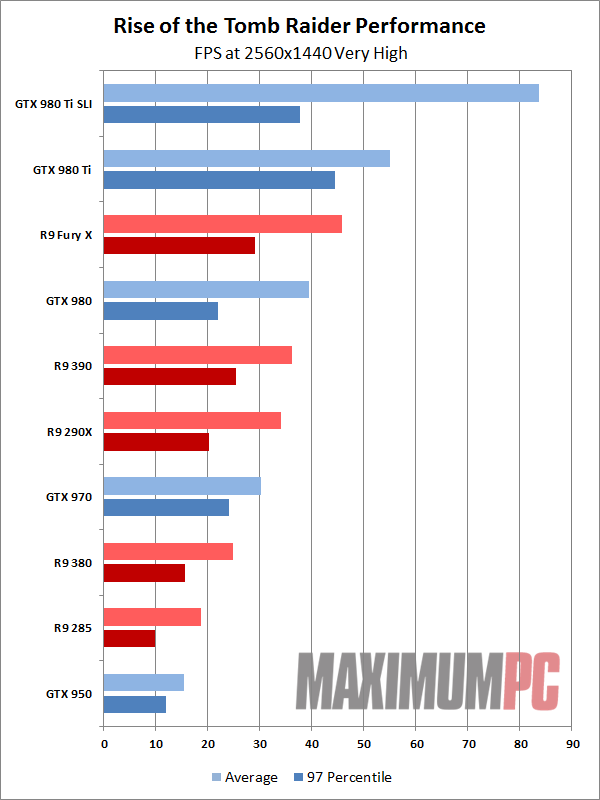
Dropping down to 2560x1440, we also move to the Very High preset (minus HBAO+, which ends up knocking about 10 percent off Nvidia GPUs and 15-20 percent off AMD GPUs). The net result is that we're rendering half as many pixels, but they're rendered at a higher quality, and performance ends up only improving by a moderate 30-50 percent. If you're struggling to hit acceptable frame rates at QHD, many GPUs will still need to run at the High or even Medium preset.
As for the cards, 980 Ti SLI easily averages more than 60 fps—so paired with a 40-144Hz QHD display like the Acer XB270HU would be an awesome experience. Minimum frame rates are still a bit choppy at times, however, falling just below 40 fps. A single 980 Ti boasts higher 97 percentile scores, but it still falls short of 60 fps averages; again, G-Sync would be a boon here. The Fury X does a bit better at this setting, with a clear win over the GTX 980, but it's well short of 60 fps and would benefit from a FreeSync panel like the Asus MG279Q. (Yes, we're very bullish on FreeSync/G-Sync right now, precisely for games like this where averaging more than 60 fps can be a bit difficult even with higher-end hardware.)
Moving down the list, we can see that the 4GB VRAM cards are still struggling—look at the 390 vs. the 290X, where the minimum fps drops quite a bit thanks to texture thrashing on the 290X. For some reason the Fury X doesn't appear to have as much difficulty, perhaps because of its faster HBM, or perhaps due to some other architectural/driver differences. Basically, most graphics cards will need to reduce some of the quality settings to handle QHD at smooth frame rates.
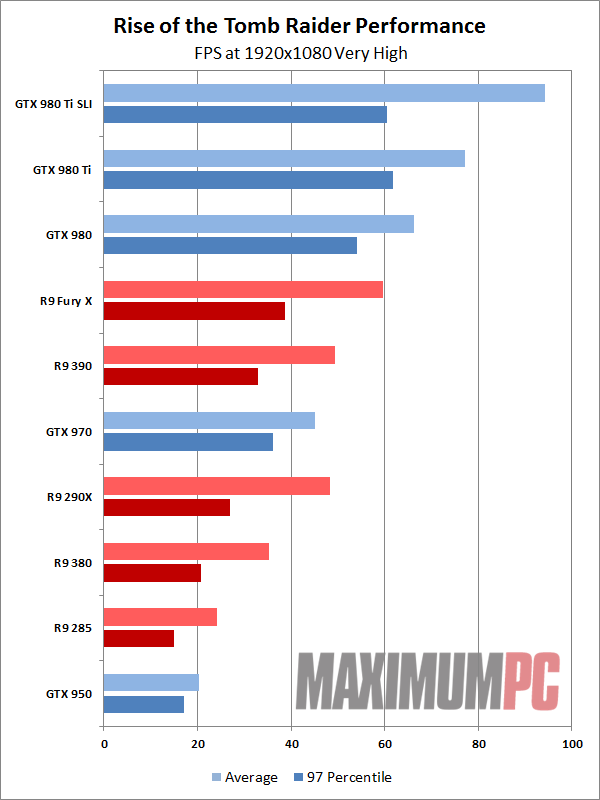
1080p with Very High settings finally allows several single GPU configurations to run at or slightly above 60 fps. Interestingly, the GTX 980 passes the Fury X now, placing second on our charts (not counting the SLI setup). AMD's minimum fps continues to be a problem, with a lot more dips and stutters than Nvidia's cards. We won't say too much else here, as we test multiple settings at 1080p, but the Very High setting still requires at least a GTX 980 or above to run really well. Users with FreeSync or G-Sync displays meanwhile could get by with an R9 390 or GTX 970 or better GPU.
The biggest gaming news, reviews and hardware deals
Keep up to date with the most important stories and the best deals, as picked by the PC Gamer team.
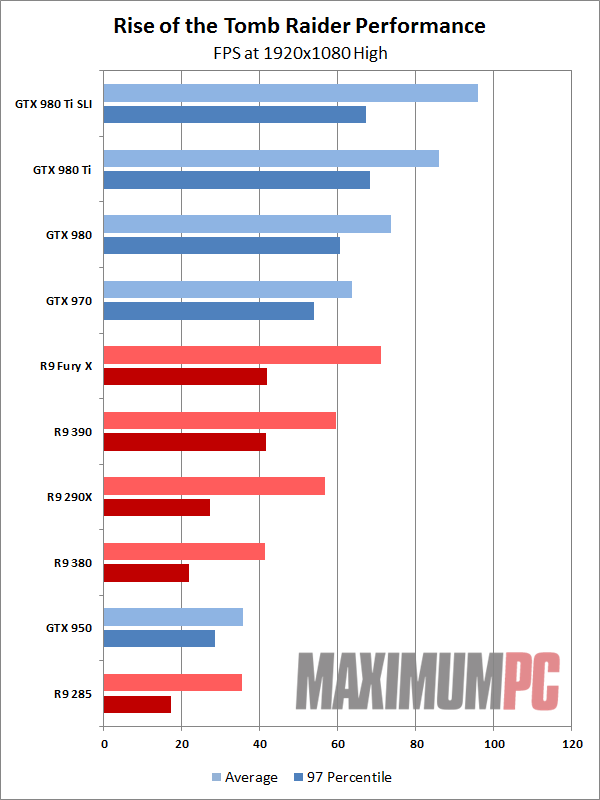
1080p with High settings finally allows the $300 GPUs to hit 60 fps averages, with the GTX 970 now holding a slight lead over the R9 390. In fact, AMD is still encountering problems, this time with apparent CPU limitations, as the GTX 970 also delivers a better overall experience than the Fury X. The 390 and 290X end up with the same average fps, but the additional VRAM on the 390 gives a huge boost to minimum frame rates.
Now granted, Rise of the Tomb Raider looks quite nice, even at the High preset—in many ways, it's similar to the previous iterations Ultimate preset. It's still a bit surprising to see so many GPUs struggling to reach playable frame rates at this setting, but we expect further driver tuning will help.
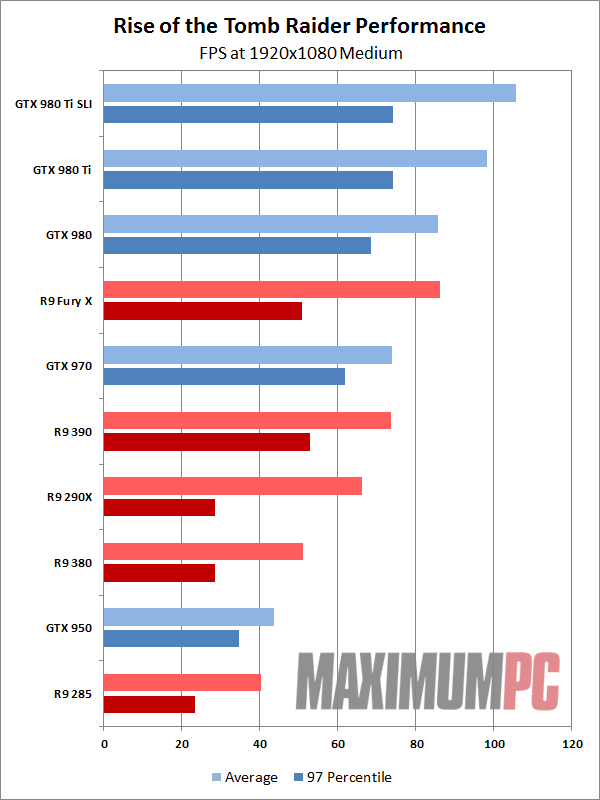
Our final GPU chart is a sobering look at graphics requirements. Here we've turned off a lot of the high visual quality settings (though PureHair remains enabled), and yet the $150-$200 cards continue to fall well short of the 60 fps mark. Considering a GTX 950 is pretty similar to a notebook GTX 970M in performance, for the time being only the fastest notebooks are going to handle Rise of the Tomb Raider without resorting to Low-to-Medium quality. Ouch.
Speaking of Low quality testing, we did run a few of the cards at 1920x1080 Low (FXAA). We won't generate graphs for these results, as the visual hit is pretty severe, but the GTX 950 managed 58.8 fps average, with a 48.9 fps 97 percentile score. That at least beats the R9 285 (for now), which scored 54.8/36.2 average/97 percentile. The R9 380 meanwhile crested the 60 fps mark with 67.4 fps and a 37.4 for 97 percentile. So even at Low quality, several otherwise capable GPUs are failing to hit 60 fps. Double Ouch.
Perhaps not surprising given the game's TWIMTBP branding, Nvidia comes out on top in most of our tests. The R9 390 at least is a decent match of the GTX 970, and the R9 380 4GB beats the GTX 950 2GB, but if you happen to run AMD hardware, we'd suggest holding off for a driver update before raiding this particular tomb.
And as a final little nugget of information, we did do some limited testing of Intel's HD 530 Graphics on an i7-6700K. It's not pretty, though not in the sense of rendering errors. There were a few minor rendering glitches, but the biggest problem is frame rates. Even at 1280x720 with the Lowest preset, average frame rates on HD 530 Graphics failed to break 30 fps, and in fact they're closer to 20 fps than 30: 21.6 average fps and 15.9 fps for 97 Percentile. So Intel processor graphics solutions other than Iris can basically forget about running Rise of the Tomb Raider, unless a driver update from Intel improves the situation.
Jarred's love of computers dates back to the dark ages when his dad brought home a DOS 2.3 PC and he left his C-64 behind. He eventually built his first custom PC in 1990 with a 286 12MHz, only to discover it was already woefully outdated when Wing Commander was released a few months later. He holds a BS in Computer Science from Brigham Young University and has been working as a tech journalist since 2004, writing for AnandTech, Maximum PC, and PC Gamer. From the first S3 Virge '3D decelerators' to today's GPUs, Jarred keeps up with all the latest graphics trends and is the one to ask about game performance.


